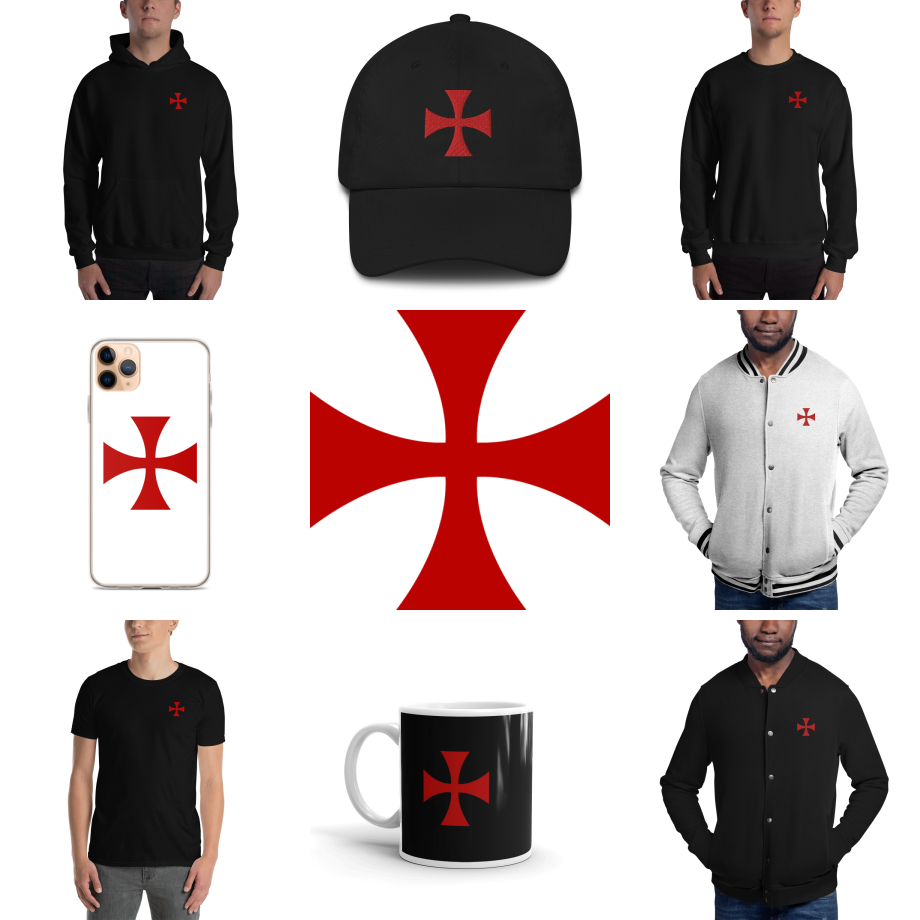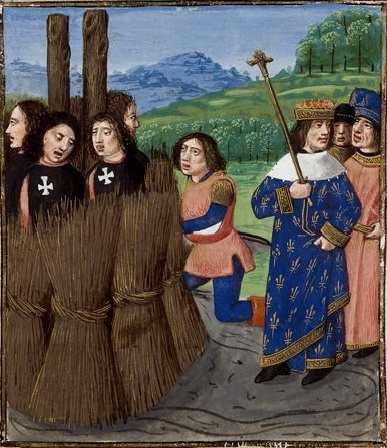Part 3 in the serialisation of ‘George Blackie’s History of the Knights Templar and the Sublime Teachings of the Order’.
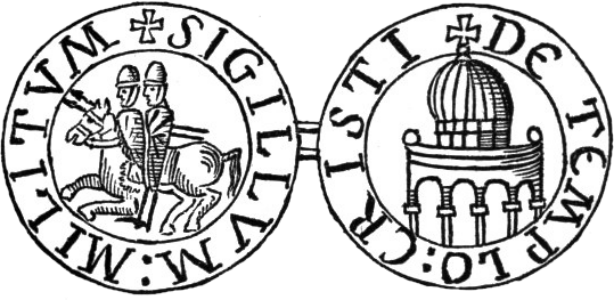

George Blackie – The History of the Knights Templar P.1
First part in the serialisation of George Blackie’s History of the Knights Templar and the Sublime Teachings of the Order – by Kenneth Jack
more….

George Blackie – The History of the Knights Templar P.2
Second part in the serialisation of George Blackie’s ‘History of the Knights Templar and the Sublime Teachings of the Order’ transcribed by Kenneth Jack.
more….
The number of Knights who presented themselves to defend the Order, at last, rose up to nine hundred, and seventy-five of these were selected to undertake the task.
The trial formally commenced on the 11th April, 1310. It was continued by the “law’s delays,” and artful adjournments, like the “halts” in a German student’s dual, which occupy more time than the fight, till the 11th of May, and then only fourteen witnesses had been examined.
By this time, the King saw that he must finish the act by a less tedious process. So, the Chancellor [Philippe de] Marigny, now Archbishop of Sens, on the pretext that they were “relapsed heretics,” gave orders that the fifty-four of the defending Knights, who had formerly confessed their errors and recanted, should be punished as guilty, and condemned to the flames.
Next day, this was done. The sacred spot of their execution is a field behind the valley of St. Antoine.
Arrived at this spot, life and liberty were offered them if they would repeat their former confession, but despite the entreaties of their friends, and the dashing of the blazing faggots in their faces, not one would seek the prolongation of his days at the price of self-degradation and sacrifice of truth.
No, the lesson of Zerubbabel, had been well learned, and they found a glorious death. Invoking the aid of GOD and the saints, while the unsparing flames licked up their latest breath, they died protesting their innocence.
Even the prejudiced spectators could not witness their noble endurance without murmurs of indignation against their torturers.

The Origin of Freemasonry and Knights Templar by Bennett, John Richardson, 1907.
IMAGE LINKED: wikimedia Attribution 4.0 International (CC BY 4.0)
To a great degree, this terrible act effected its end. Forty-four Knights immediately retracted their plea of not guilty.
They, and such others as had acknowledged crime, were at once set free, classed as “reconciled,” and, in some instances, rewarded. But the steadfast, true, noble Knights, whose fortitude no terror could shake, were confined, sentenced to perpetual imprisonment.
Meanwhile, the terrible course, inaugurated at Paris, with those termed “relapsed heretics,” was initiated all through France, and vast numbers perished in the flames.
Such acts amazed and confounded the Commissioners, who adjourned, on the 21st of May, to the 3rd November.
On their re-assembling, no one appeared to defend the Order, but depositions of witnesses were received to the 26th May, 1311.
Some few Knights held out, mostly in dungeons, where their cries and tortures were alike unheard and unheeded, and the evidence collected was of such character as to suit the managers of the prosecution.
The number of witnesses was two-hundred and thirty-one, of whom one hundred and fifty were Knights who confessed, either in whole or part.
The record of criminal procedure presents nothing more deplorable than this evidence. Given by witnesses who show marked signs of internal struggles between remorse and fear, reluctance, and dread of blundering and self-contradiction, to say nothing of its absurdity, it is a matter of wonder that it was ever seriously entertained for a moment.

A torture chamber with suspected heretics having their feet burned or being suspended with a rope from a pulley while scribes note down confessions. Engraving by B. Picart, 1722
IMAGE LINKED: Wellcome Collection Attribution 4.0 International (CC BY 4.0)
But in spite of all this, the fate of the Order was not yet finally sealed. To do so formally, it was found necessary to call a general council of the Church, which accordingly met on the 13th October, 1311, at Vienne, in Dauphiné.
And here occurred a scene which defies contradiction, and throws an indelible stain on the Romish Church.
A promise of safety was made on the public faith, to all those Knights who would appear to defend the Order, and they were solemnly required to present themselves.
Hearing this proclamation, which was widely spread all throughout Christendom, and believing in the honour of the Pope when he announced a special protection, nine noble and undaunted chevaliers came forward to defend their Order.
They stated themselves to be the representatives of from fifteen hundred to two thousand persons, who were wandering as common fugitives in the neighbourhood of Lyons.
Scarcely, however, had they thrown themselves into the lion’s den, and announced their errand, when, by order of this double-dealing rascal, Pope Clement, they were seized, thrown into prison, and put in irons.
This precious representative of St. Peter boasts of his atrocious perfidy, in a letter to his fit colleague, King Phillip.
However, the question arose in council, whether they should be allowed to appear in the defence, a remarkable question, truly, to raise, after all that had gone before.
On the vote being taken, all the prelates of Italy, save one, all of Spain, England, Germany, Denmark, Scotland, and Ireland, voted in the affirmative.
Satisfied that this council would not lay into his hands, Clement immediately very coolly declared the session terminated, and it adjourned to April 3, 1312.
Philip IV ordering the burning of the Knights Templar, Giovanni Boccaccio, 1480. By Giovanni Boccaccio (De casibus virorum illustrium), translated in French by Laurent de Premierfait (Des cas des ruynes des nobles hommes et femmes) – Philip IV ordering the burning of Knights Templar, Public Domain
IMAGE LINKED: wikimedia Attribution 4.0 International (CC BY 4.0)
Meanwhile, in February, the King suddenly appeared, with his royal retinues, in Vienne, and the Pope re-assembled the Cardinals, and a few of the prelates, in secret consistory, and declared the abolition of the Order.
When the appointed day of meeting came, the King, the Pope, and an imposing array of military, appeared before the council.
Clement there re-read this decree, to which the prelates listened in silence, not daring to express dissent, nor venturing a word of approbation.
And the farce of justice, and ridiculous display of “divine right,” was ended. But one sad record remains untold.
On March 18, 1314, Grand Master de Molay and three Chiefs were brought from their loathsome dungeons, where they had lingered now six years, and were placed on a high stage in front of the church of Notre Dame, before the Archbishop of Sens and their judges.
A form of trial was gone through, and they were then told that their former confession was humanely regarded in the light of penitence, and, therefore, their life was spared, and they were doomed only to perpetual imprisonment.
On hearing this, our Grand Master rose, and, in words of burning eloquence, demanded attention.
“It is right,” said he, “that in these, the last moments of my life, I should proclaim the truth.
I declare, therefore, in the sight of heaven and earth, that, to my eternal shame, I have indeed committed the greatest of crimes, but it was only when I acknowledged those which so black a malevolence has attributed to our Order.
I attest, as the truth obliges me to do, that it is innocent.
I declared the contrary only to suspend the excessive agonies of the rack, and to obtain the forbearance of my torturers.
I know the penalty that awaits me for what I now utter; but the frightful prospect presented to me by the fate of many of my brethren, shall not tempt me again to confirm my former lie by another; the life offered me on so infamous a condition I renounce without regret.”

Jacques de Molay, the last grand master of the Knights Templars, burnt alive as a lapsed heretic in Paris. Wood engraving by J. David.
IMAGE LINKED: Wellcome Collection Attribution 4.0 International (CC BY 4.0)
A burst of applause forced itself from the unwilling lips of his audience, and immediately one of his companions, Guy, Grand Commander of Normandy, brother of the Earl of Auvergne, expressed his assent to the words of his chief.
These heroes had not long to wait. A hurried privy council instantly met, condemned them, and that same evening they were burned on a slow fire, on a small island on the Seine.
They bore their sufferings with heroic fortitude, and expired proclaiming the innocence of their Order with their latest breath.
The fickle mob viewed their sufferings with pity and admiration, and during the night, visited the scene of their martyrdom, whence they bore off their ashes to preserve as relics, and bequeath, “as sacred legacies, unto their issue.”
And thus, it was believed, our Order perished from history. But truth can never die; and our Order is truth.
It was not annihilated! De Molay, aware of his impending fate, invested his friend, John Marcus Larmenius, of Jerusalem, with his power and dignity, and a succession of Grand Masters was thus secured.
Although all the other countries of Europe followed King Phillip’s example, and King Edward II. took a similar course in England, yet in Scotland one branch is known to have survived.
Zealous and bigoted Scotia never defaced her statute books by laws against these valiant Knights, and the Order was saved there, and probably owed its existence to the courageous stand her people were then making against Edward, and which terminated in the battle of Bannockburn, and the freedom of their native country.
The Larmenius Charter of Transmission. By Vespercirrus – Own work
IMAGE LINKED: wikimedia Attribution 4.0 International (CC BY 4.0)
Another branch exists in Portugal, but its name has been changed to the of Knights of Christ, the crosses and offices of which are solely conferred by the Sovereign. A third branch, of which you will find mention in Macey’s (sic) “Masonic Guide,” was, until very recently, believed to exist.
It was claimed as the only branch, and some traced the Knights of America to its parentage. It retained the name of Knights of the Temple, and, as recently as 1840, claimed to be in possession of a Greek MS. volume, containing its records and roll of Grand Masters.
These boasted having received a charter from Larmenius, given to Francis Theobold of Alexandria, from whom it descended through many illustrious French nobles and warriors, to Sir Sydney Smith, elected in 1838.
They also claimed to have the sword and ashes of De Molay. But the Scots Priories found this claim to be false, and that it was founded on a charter, the fictitious nature of which is obvious, because the name of Bertrand Duguesclin is signed to it, while history affirms that he could not write.
On this discovery, Sir Sydney Smith and the Duke of Sussex, Grand Master Mason of England, dropped their connection with the Order.
Since 1843, it has not been heard of, and no standard work on Freemasonry, of modern date, more than alludes to it.
Templar church (12th century) of the Convent of the Order of Christ, Tomar, Portugal. Photo by Alvesgaspar
IMAGE LINKED: wikimedia Attribution 4.0 International (CC BY 4.0)
Article by: Kenneth C. Jack
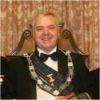
Kenneth C. Jack FPS is an enthusiastic Masonic researcher/writer from Highland Perthshire in Scotland.
He is Past Master of a Craft Lodge, Past First Principal of a Royal Arch Chapter, Past Most-Wise Sovereign of a Sovereign Chapter of Princes Rose Croix.
He has been extensively published in various Masonic periodicals throughout the world including: The Ashlar, The Square, The Scottish Rite Journal, Masonic Magazine, Philalethes Journal, and the annual transactions of various Masonic bodies.
Kenneth is a Fellow of the Philalethes Society, a highly prestigious Masonic research body based in the USA.
Recent Articles: Kenneth C. Jack
 Observations on the History of Masonic Research Archaeology is often associated with uncovering ancient tombs and fossilized remains, but it goes beyond that. In a Masonic context, archaeology can be used to study and analyze the material culture of Freemasonry, providing insight into its history and development. This article will explore the emergence and evolution of Masonic research, shedding light on the challenges faced by this ancient society in the modern world. |
 Anthony O'Neal Haye – Freemason, Poet, Author and Magus Discover the untold story of Anthony O’Neal Haye, a revered Scottish Freemason and Poet Laureate of Lodge Canongate Kilwinning No. 2 in Edinburgh. Beyond his Masonic achievements, Haye was a prolific author, delving deep into the history of the Knights Templar and leaving an indelible mark on Scottish Freemasonry. Dive into the life of a man who, despite his humble beginnings, rose to prominence in both Masonic and literary circles, leaving a legacy that continues to inspire. |
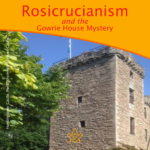 Rosicrucianism and the Gowrie House Mystery Unearth the mystifying intersections of Rosicrucianism and the infamous Gowrie House Mystery. Dive into speculative claims of sacred knowledge, royal theft, and a Masonic conspiracy, harking back to a fateful day in 1600. As we delve into this enthralling enigma, we challenge everything you thought you knew about this historical thriller. A paper by Kenneth Jack |
 Thomas Telford's Masonic Bridge of Dunkeld Of course, there is no such thing as a ‘Masonic Bridge’; but if any bridge is deserving of such an epithet, then the Bridge of Dunkeld is surely it. Designed by Scotsman Thomas Telford, one of the most famous Freemasons in history. |
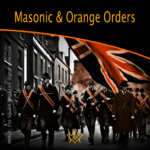 The masonic and orange orders: fraternal twins or public misperception? “Who’s the Mason in the black?” |
 Kenneth Jack's research reveals James Murray, 2nd Duke of Atholl – the 'lost Grand Master' |
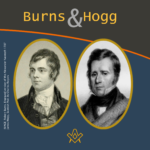 An Oration delivered to the Annual Burns and Hogg Festival, at Lodge Canongate Kilwinning, No. 2, Edinburgh, on 24 January 2018. By Bro. Kenneth C. Jack, FSAScot FPS, Past Master, Lodge St. Andrew, No. 814, Pitlochry. |
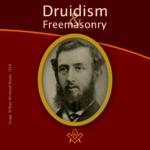 William Winwood Reade was a Scottish philosopher, historian, anthropologist, and explorer born in Crieff, Perthshire, Scotland. The following article by Kenneth Jack, provides some hints that William may have been a Freemason, but there is presently no definitive evidence he was. |
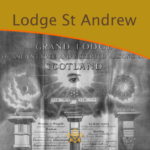 What's in a name? A brief history of the first Scottish Lodge in Australia - By Brother Kenneth C. Jack, Past Master, Lodge St. Andrew, No. 814, Pitlochry |
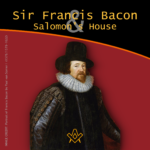 Sir Francis Bacon and Salomon’s House Does Sir Francis Bacon's book "The New Atlantis" indicate that he was a Rosicrucian, and most likely a Freemason too? Article by Kenneth Jack |
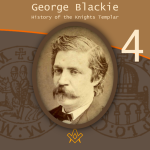 George Blackie – The History of the Knights Templar P.4 The final part in the serialisation of George Blackie's 'History of the Knights Templar and the Sublime Teachings of the Order' transcribed by Kenneth Jack. |
 George Blackie – The History of the Knights Templar P.3 Third part in the serialisation of George Blackie's 'History of the Knights Templar and the Sublime Teachings of the Order' transcribed by Kenneth Jack. |
 George Blackie – The History of the Knights Templar P.2 Second part in the serialisation of George Blackie's 'History of the Knights Templar and the Sublime Teachings of the Order' transcribed by Kenneth Jack. |
 George Blackie – The History of the Knights Templar P.1 First part in the serialisation of George Blackie's History of the Knights Templar and the Sublime Teachings of the Order – by Kenneth Jack |
 Little known as a Freemason, Bro Dr Robert ‘The Bulldog’ Irvine remains a Scottish rugby legend, and his feat of appearing in 10 consecutive international matches against England has only been surpassed once in 140 years by Sandy Carmichael. |
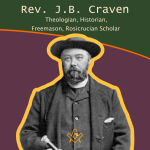 Rev. J.B. Craven: Theologian, Historian, Freemason, And Rosicrucian Scholar Archdeacon James Brown Craven is one of those unsung heroes of Scottish Freemasonry about whom very little has been previously written – here Kenneth Jack explores the life and works of this remarkable esoteric Christian. |
 Discover the powerful family of William Schaw, known as the 'Father of Freemasonry' |
 This month, Kenneth Jack invites us to look at the life of Sir William Peck; - astronomer, Freemason and inventor of the world's first electric car. A truly fascinating life story. |
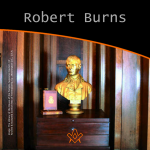 A Tribute to Scotland's Bard – The William Robertson Smith Collection With Burns' Night approaching, we pay tribute to Scotland's most famous Bard – The William Robertson Smith Collection |
 The Joy of Masonic Book Collecting Book purchasing and collecting is a great joy in its own right, but when a little extra something reveals itself on purchase; particularly with regards to older, rarer titles.. |
 Masons, Magus', and Monks of St Giles - who were the Birrell family of Scottish Freemasonry? |
 The 6th Duke of Atholl - Chieftain, Grand Master, and a Memorial to Remember In 1865, why did over 500 Scottish Freemasons climb a hill in Perthshire carrying working tools, corn, oil and wine? Author Kenneth Jack retraces their steps, and reveals all. |
 Charles Mackay: Freemason, Journalist, Writer Kenneth Jack looks at life of Bro Charles Mackay: Freemason, Journalist, Writer, Poet; and Author of ‘Tubal Cain’. |
 A Mother Lodge and a Connection Uncovered, a claim that Sir Robert Moray was the first speculative Freemason to be initiated on English soil. |
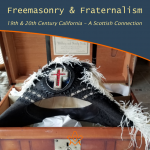 What is it that connects a very old, well-known Crieff family, with a former President of the United States of America? |
 The life of Bro. Cattanach, a theosophist occultist and Scottish Freemason |
 The Mysterious Walled Garden of Edzell Castle Explore the mysterious walled garden steeped in Freemasonry, Rosicrucianism, and Hermeticism. |
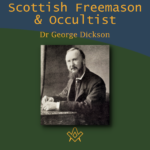 Dr. George Dickson: Scottish Freemason and Occultist Bro. Kenneth explores the life of Dr George Dickson a Scottish Freemason and Occultist |
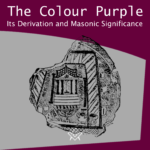 The Colour Purple - Its Derivation and Masonic Significance What is the colour purple with regards to Freemasonry? The colour is certainly significant within the Royal Arch series of degrees being emblematical of Union. |
 Bridging the Mainstream and the Fringe Edward MacBean bridging mainstream Freemasonry with the fringe esoteric branches of Freemasonry |
 Freemasonry in the Works of John Steinbeck We examine Freemasonry in the Works of John Steinbeck |
 Renegade Scottish Freemason - John Crombie Who was John Crombie and why was he a 'renegade'? |
 Scottish Witchcraft And The Third Degree How is Witchcraft connected to the Scottish Third Degree |
masonic knowledge
to be a better citizen of the world
share the square with two brothers

click image to open email app on mobile device
